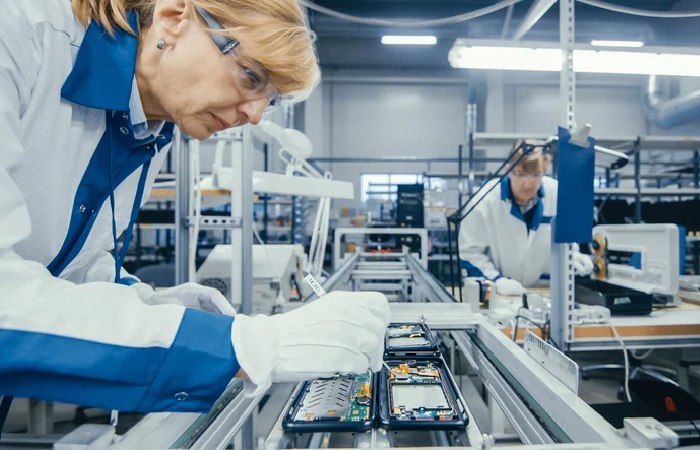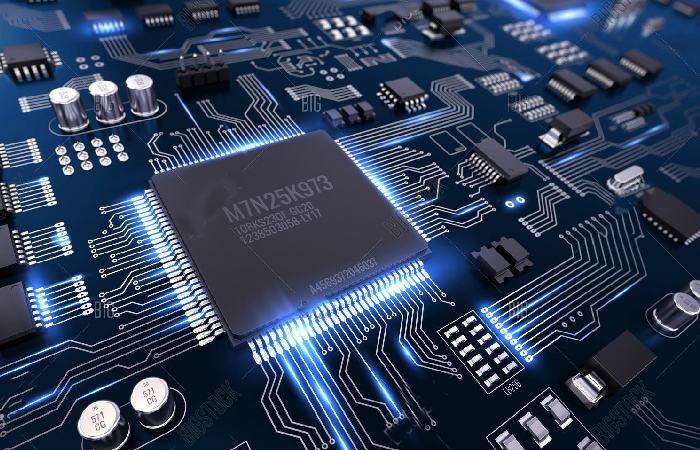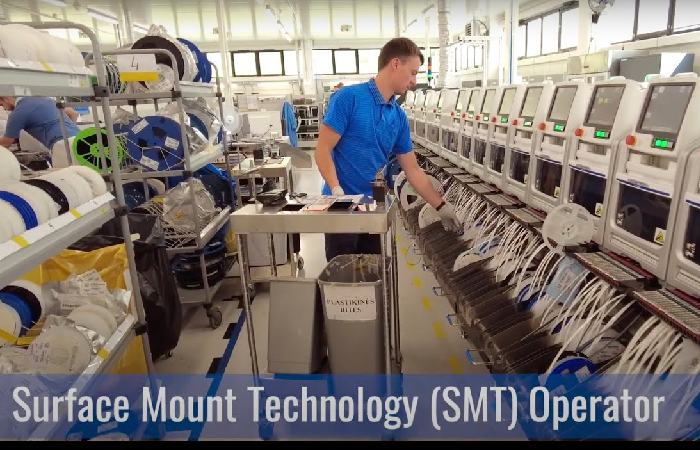By enabling the efficient and compact mounting of electronic components on printed circuit boards, SMT (surface mount technology) revolutionized the electronics industry. With its unique features and advantages, this technique is the cornerstone of modern manufacturing processes. Given its obvious relevance, we show you what SMT is, how it works, its characteristics, and its uses and applications.
Surface mount technology (STM) is a technique for assembling electronic components onto printed circuit boards, such as a device’s motherboard. In addition to offering exceptional precision and efficiency, this technique distinguishes itself by dispensing with holes or cables to connect electronic components.
This particularity underpins the manufacture of compact electronic devices that can perform complex functions despite their small size. The SMT technique allows a higher density, lower cost, and better performance of electronic circuits.
What is SMT for?

Surface mount technology (SMT) is used in multiple industries and is pivotal in modern electronics. The versatility and efficiency offered by STM make it a crucial and indispensable aspect. In essence, this technique underpins and drives innovation by shaping the technological world we live in today.
Some examples of SMT products are:
- Smartphones.
- Portable.
- Tablets.
- Smartwatches.
- Cameras.
- GPS devices.
- Pacemaker.
- Hearing aids.
- Sensors.
- Robots.
- Drones.
- Satellites.
- Missiles.
- Radars and many other devices.
Characteristics of SMT

SMT offers several key features that make it the preferred choice in modern electronics manufacturing, the main ones being:
Miniaturization: It allows smaller components to be placed on the surface of the printed circuit board. It results in higher-density circuits and more compact devices.
High speed: Having no wires, SIt components reduce the parasitic capacitance and inductance of the circuit. It improves the speed and quality of signal transmission.
Higher performance: Precision of SMT welding and component placement improves signal integrity and reduces electromagnetic interference.
Automation: Its components allow easy automation in electronic production, improving product efficiency and reliability. It makes it possible to reduce production time and increase throughput.
Cost-effectiveness: Eliminating through holes and the automated assembly process significantly reduces production costs and material waste.
Differences between SMT and conventional mounting technologies
SMT technique and traditional assembly technologies represent two paradigms in the manufacture of electronic products. Although both methods aim to integrate electronic components into printed circuit boards, they differ fundamentally in their approaches.
Conventional assembly is mainly based on through-hole technology. It involves inserting the component wires through holes in the printed circuit board. Subsequently, the wires are fixed by applying solder on the opposite side of the plate.
In SMT technology, in contrast, components are fixed directly to the board’s surface with flat wires or solder balls. This distinction gives rise to several key differences:
It enables higher production speed and cost efficiency than conventional assembly’s labor-intensive nature.
In contrast to conventional mounting technologies, SMT allows for greater miniaturization. It improves the efficiency of circuits and reduces the overall size of electronic devices.
Fixing components at the surface level contributes to improved thermal performance and signal integrity. Conversely, conventional assembly can suffer from signal distortions.
Modes of use of SMT
STM has a wide application in various industries, having a leading and fundamental role in electronics and manufacturing printed circuit boards.
SMT in the electronics industry
Its technology plays a fundamental role in the electronics industry. This technique allows the production of a wide range of consumer electronics, communication devices, medical equipment, automotive electronics, etc. SMT’s ability to pack components densely onto a printed circuit board improves device functionality and allows for high compactness.
SMT in the manufacture of printed circuit boards (PCBs)
In the field of manufacturing printed circuit boards (PCBs), SMT has marked a paradigm shift. The following describes how the SMT technique is used in the PCB manufacturing process:
PCB Preparation: Start with a previously designed blank PCB with the necessary circuit, and clean and prepare its surface for assembly.
Solder Paste Application: Apply solder paste to the areas where the components will be assembled using a solder template or mask.
Component Placement: Precisely place components such as resistors, transistors, capacitors, or other devices over the solder paste areas on the PCB.
Soldering: Once the components are in place, subject the PCB to a soldering process, typically carried out in a reflow furnace. This process gradually heats the PCB to melt the solder paste and establish connections.
Encapsulation and Protection: Ensure durability and reliability by encapsulating the components with resin or other epoxy materials. This creates a protective layer that insulates them from moisture, dust, vibrations, and other adverse environmental factors.
What is an SMT operator?

An SMT operator is a qualified professional who plays a crucial role in supervising the assembly process of electronic components under the SMT precept. Their work encompasses several tasks essential to successful surface mount technology operations.
Roles and responsibilities of the SMT operator
SMT operators have several responsibilities, including:
Machine programming:It operators create and optimize machine programs that control component placement and welding.
Quality Control: Inspect components and finished printed circuit boards to ensure they meet quality standards and specifications.
Maintenance: It operators perform routine maintenance of SMT equipment, ensuring consistent performance.
Troubleshooting: When problems arise during assembly, operators diagnose and rectify problems to minimize production downtime.
Skills and knowledge required to be an efficient SMT operator
Being an efficient SMT operator involves a combination of skills and technical expertise, including:
Mastery of programming: To create and modify assembly programs, it is essential to master the languages and software of programming machines.
Attention to detail: Precision is paramount in SMT assembly. Operators must have a keen eye for detail to detect defects and ensure precise placement of components.
Problem-solving acumen: Quickly diagnosing and resolving technical faults is vital to maintaining a smooth production flow.
Knowledge of materials: A thorough knowledge of welding materials, resins, adhesives, and component specifications contributes to successful SMT operations.
Conclusion
Surface Mount Technology revolutionizes electronics manufacturing with precision and efficiency. It eliminates holes and cables, enabling smaller, faster, and cost-effective devices. It impact spans industries, from smartphones to healthcare and defense. Its key features include miniaturization, speed, performance, automation, and cost-effectiveness. SMT’s role in innovation and shaping modern technology is undeniable.





